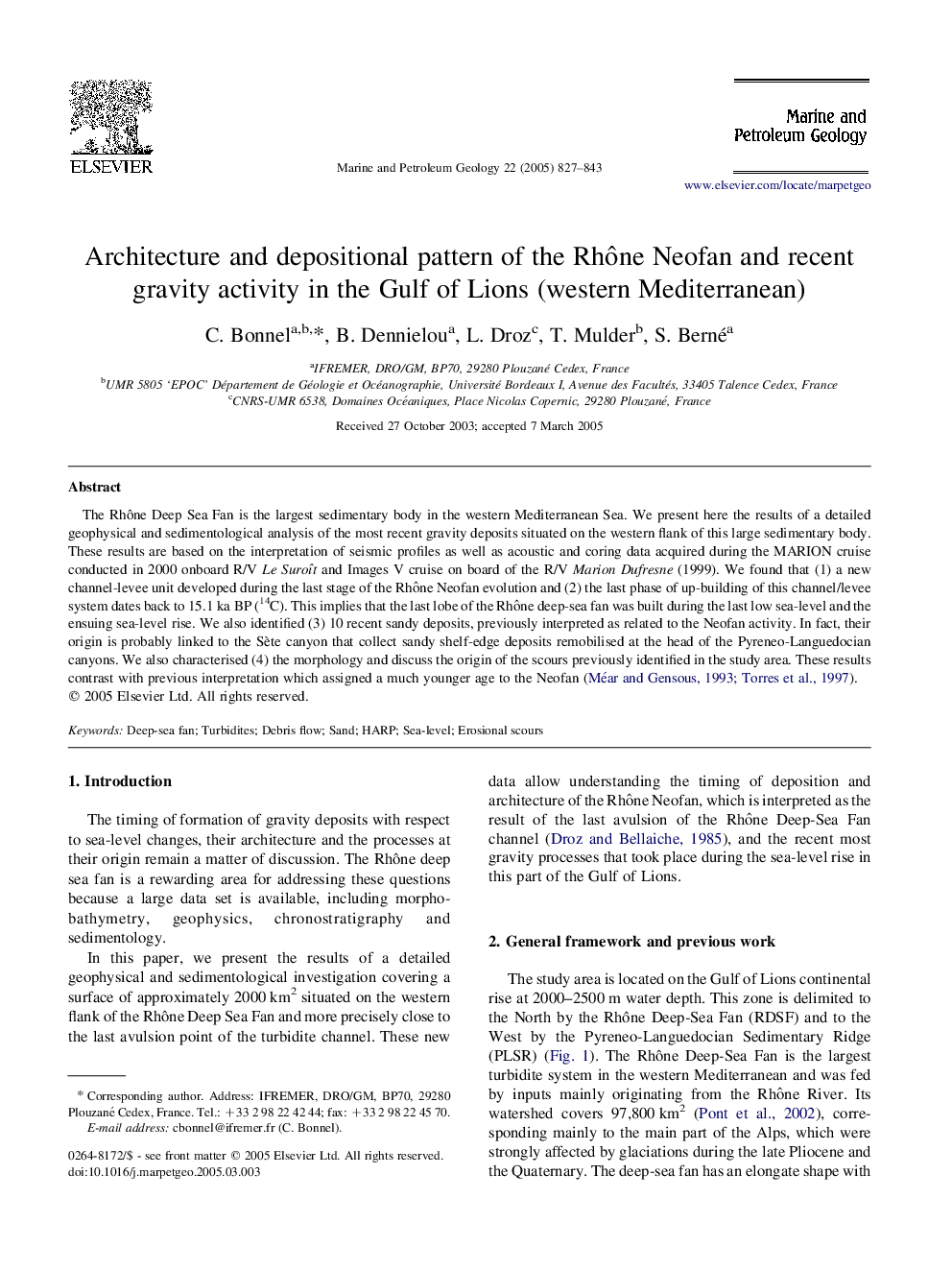| Article ID | Journal | Published Year | Pages | File Type |
|---|---|---|---|---|
| 9528417 | Marine and Petroleum Geology | 2005 | 17 Pages |
Abstract
The Rhône Deep Sea Fan is the largest sedimentary body in the western Mediterranean Sea. We present here the results of a detailed geophysical and sedimentological analysis of the most recent gravity deposits situated on the western flank of this large sedimentary body. These results are based on the interpretation of seismic profiles as well as acoustic and coring data acquired during the MARION cruise conducted in 2000 onboard R/V Le Suroît and Images V cruise on board of the R/V Marion Dufresne (1999). We found that (1) a new channel-levee unit developed during the last stage of the Rhône Neofan evolution and (2) the last phase of up-building of this channel/levee system dates back to 15.1 ka BP (14C). This implies that the last lobe of the Rhône deep-sea fan was built during the last low sea-level and the ensuing sea-level rise. We also identified (3) 10 recent sandy deposits, previously interpreted as related to the Neofan activity. In fact, their origin is probably linked to the Sète canyon that collect sandy shelf-edge deposits remobilised at the head of the Pyreneo-Languedocian canyons. We also characterised (4) the morphology and discuss the origin of the scours previously identified in the study area. These results contrast with previous interpretation which assigned a much younger age to the Neofan (Méar and Gensous, 1993, Torres et al., 1997).
Related Topics
Physical Sciences and Engineering
Earth and Planetary Sciences
Economic Geology
Authors
C. Bonnel, B. Dennielou, L. Droz, T. Mulder, S. Berné,
